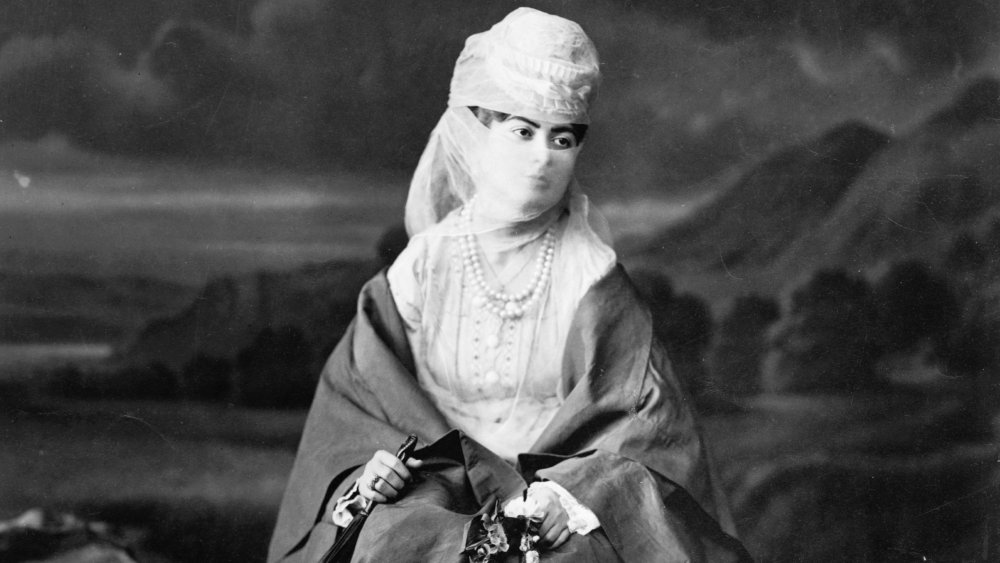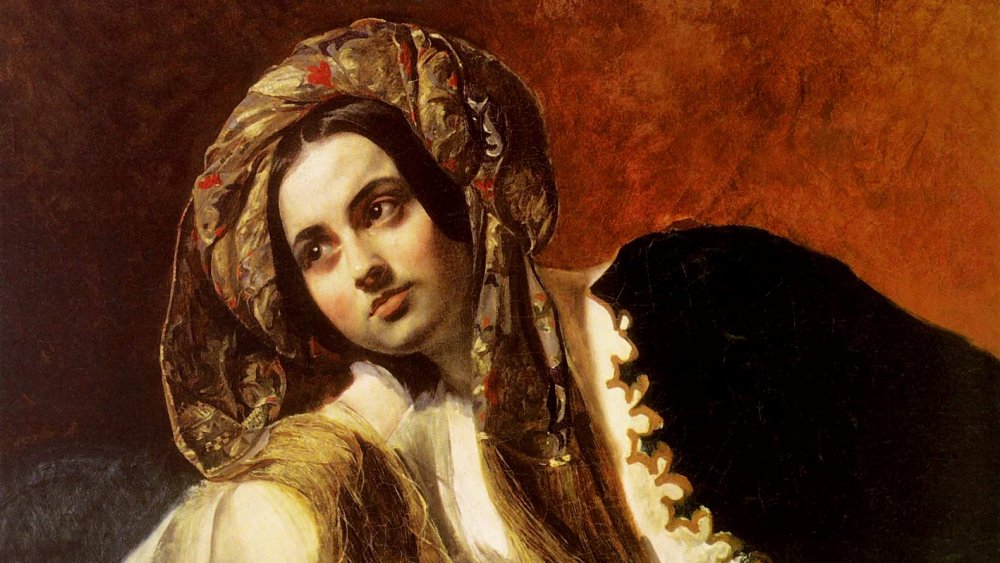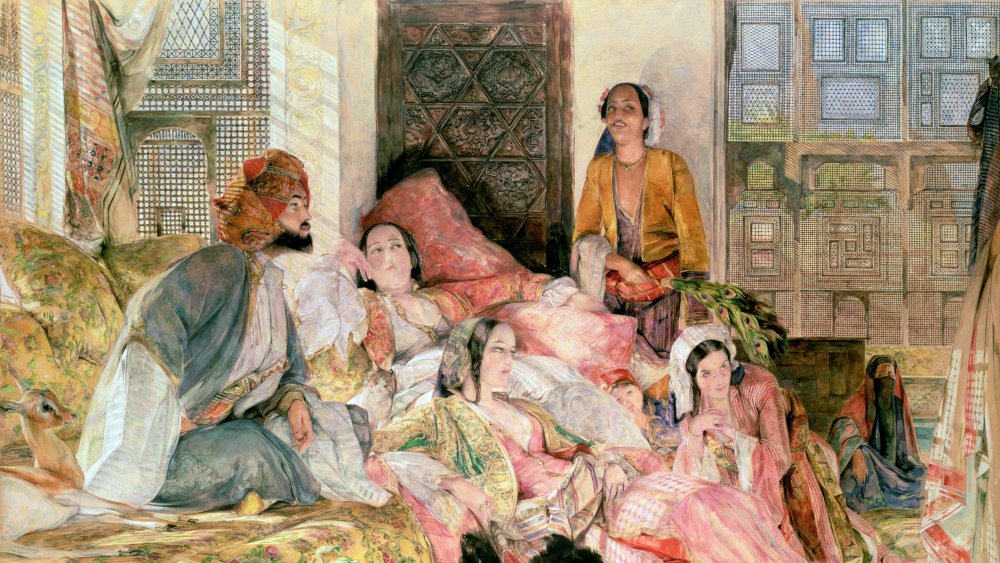What Life Was Like For Women In The Ottoman Empire
The Ottoman Empire was one of the most longstanding and powerful empires in history. It filled a power vacuum left by the aging Byzantine Empire (330 to 1453 CE), which itself rose to prominence as the eastern half of the faded Roman Empire. The Ottoman Empire lasted over 600 years, from 1299 – 1922, when Sultan Mehmet VI was deposed following World War I, as reported by History. Nomadic, Anatolian (modern-day Turkey) tribal leader Osman I founded the empire, with its capital in Constantinople, and at its most expansive, the empire stretched from Algeria in the West, down through Egypt and Saudi Arabia, all the way up to Hungary and Ukraine. The Ottomans made notable advancements in astronomy, geography, mathematics, and the arts, as cited by by Muslim Heritage, especially during its cultural height under Süleiman the Magnificent in the 16th century. Moving into the 1800's, the empire was among the first to adopt modern surgical tools, and over the course of its history portrayed strong knowledge of medicine.
Even though the empire was a generally peaceful and prosperous place, it was also a highly hierarchical and rigidly patriarchal society characterized by male and female slavery, and plenty of political infighting within families. Women's roles were strictly reinforced, but at the same time within those roles they were often afforded greater freedoms than other societies, beyond the stereotypical harem. For non-slaves, this extended into commerce, agriculture, and political influence. There were immense differences between higher and lower classes, though, regarding women's power and rights, as well as country vs. city.
The fate and freedoms of birth
As reported in All About Turkey, women in rural areas of the empire helped in fields as well as held down households, while their counterparts in cities were largely preoccupied with homebound tasks that suited their economic station. Aside from child-rearing duties and overseeing servants, women had the latitude to visit friends and family as they saw fit, go to public baths and special events, dress up as they liked, and engage in commerce (provided the commerce didn't involve men). This ran from embroidery and weaving, to running bakeries, mills, and entire grocery stores. Following the progressive Tanzimat Reforms of 1839, women took up careers as poets, journalists, calligraphists, and interior designers.
On the opposite side, harems remain an infamous, almost mystical aspect of Ottoman life.
Otto-woman Empire
Slaves in harems spent their days on small cots in dormitories of the Sultan's 230-room set of chambers in Topkapi Palace in modern-day Istanbul, per BBC. Harems reportedly began as a way to protect women while men were away during warfare, but that original intent is far from the dark boredom experienced by those who were not even allowed to touch another man, even slave-eunuchs kept on the palace grounds (the only type of man allowed), which would result in instant death for the girl. The most they had to strive for was being "gozode," or favored, in the eyes of the Sultan, as Simon Leyland cites. If a harem occupant gained the attention of the Sultan, he merely tossed his handkerchief to her, signifying the night's business.
But even taking this extreme dichotomy into account, women had the potential to hold influence throughout Ottoman society, at both high political and local levels. Within a given mahalle especially, or neighborhood, as Cambridge University describes, women made sure their voices were heard.


